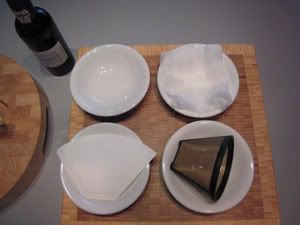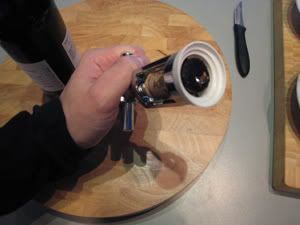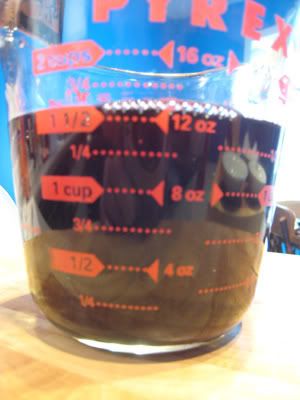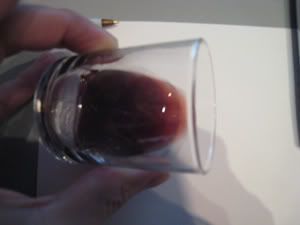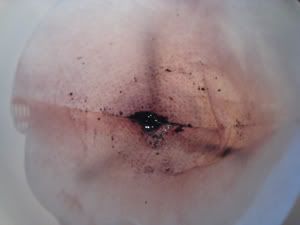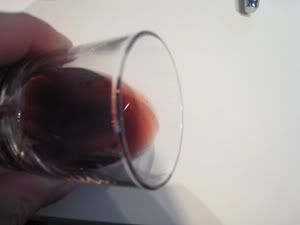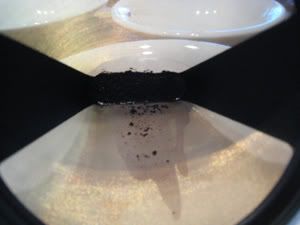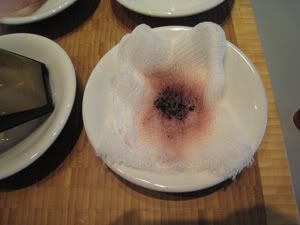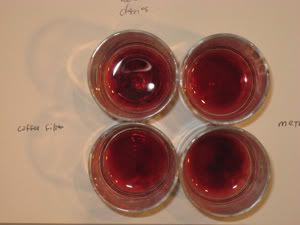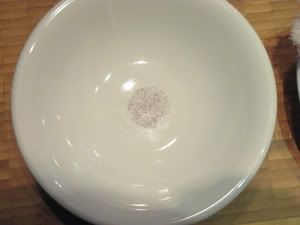Decanting experiments
Posted: 05:25 Sat 15 Mar 2008
[Split by jdaw1 from immediately after this post in Noval 1963 magnum TN.]
I was in a home-goods store with a coffeesaur (seur? like you can tell the difference between the two at 7!) and was discussing the filtering of Port sediment. I talked about the coffee filter and muslin experiments, and that I wished I could find a stainless steel screen of minutely fine grain.
Aside from the scientific grade ones she offered (which i feared might diminish from the port's body, take forever, and clog on the first pour), she pointed out a metal coffee filter. It happened to be a dome rather than a funnel shape, but have any of you tried the copper-colored metal coffee filters for removing port sediment?
I was in a home-goods store with a coffeesaur (seur? like you can tell the difference between the two at 7!) and was discussing the filtering of Port sediment. I talked about the coffee filter and muslin experiments, and that I wished I could find a stainless steel screen of minutely fine grain.
Aside from the scientific grade ones she offered (which i feared might diminish from the port's body, take forever, and clog on the first pour), she pointed out a metal coffee filter. It happened to be a dome rather than a funnel shape, but have any of you tried the copper-colored metal coffee filters for removing port sediment?
